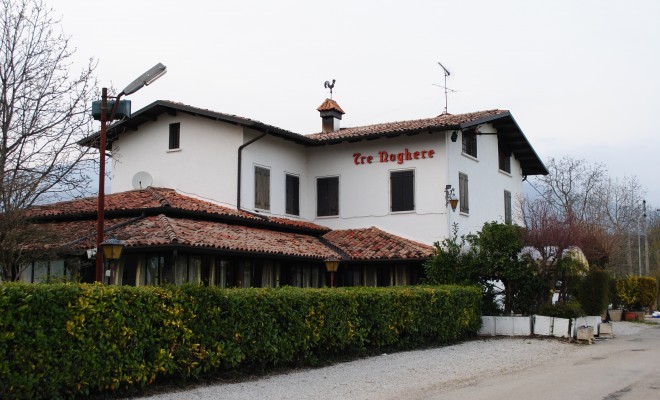 Text: Milda Januseviciute / Photography: Milda Januseviciute
Text: Milda Januseviciute / Photography: Milda Januseviciute
Tasting Veneto : the fusion of old and new
Sometimes it happens to me to visit a place: a town, a restaurant, a market… that literally steals my heart away. Why? Because there’s a story behind it. I love stories, and I love places that can tell me a story. This time, it’s a story about a restaurant. A restaurant called Tre Noghere in a town with a funny name, Bigolino. Why is it funny to me? Well, I have a couple of friends that have an amazing dog, a beagle. I have never seen a dog with a face, as expressive as this one! To me, Bigolino sounds like a puppy beagle. Yet it does not have anything to do with dogs. One of the stories on the birth of the name of the town says that it was named after Bigollium which apparently was the name of the ferry that was carrying people from one bank of the river Piave to the other. However, let’s not get carried away.
Bigolino is a fraction of Valdobbiadene, a town in the North-East Italy, one of the three areas that can be proud of producing the genuine, authentic D.O.C. prosecco. If, one day, you happen to follow the so-called strada di prosecco (the prosecco road) and find yourself in Bigolino, do not miss the opportunity to dine in restaurant called Tre Noghere. You can find this family restaurant where the town ends and fields of wines, so characteristic of the Veneto region, begin.
When I was first taken to Tre Noghere by a friend, the thing that impressed me most of all was a waitress, in her late sixties-early seventies (I didn’t dare asking the age of the lady!), who says that she has been working in the restaurant for over fifty years and explains that, for her, meeting new people and welcoming every person as a dear friend is a pleasure, and is not willing to stop doing that.
Opened in 1965, the restaurant offers a rustic environment, where you would expect home-made food. It is now run by Luca, the son of Mrs. Vittoria, the lady waitress, and the third generation chef, who is now in charge of the place and shares the work in the kitchen with his father, Mr. Orazio. The recipes here are passed from generation to generation, which gives even more value to the place. The father, is in late seventies, still takes an active part in the process of cooking. Amazing!
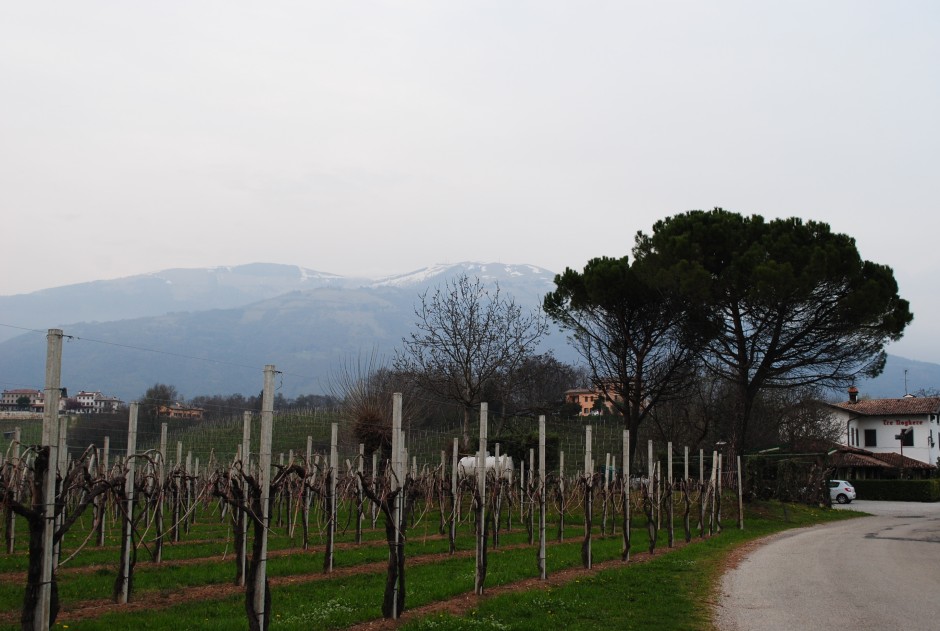
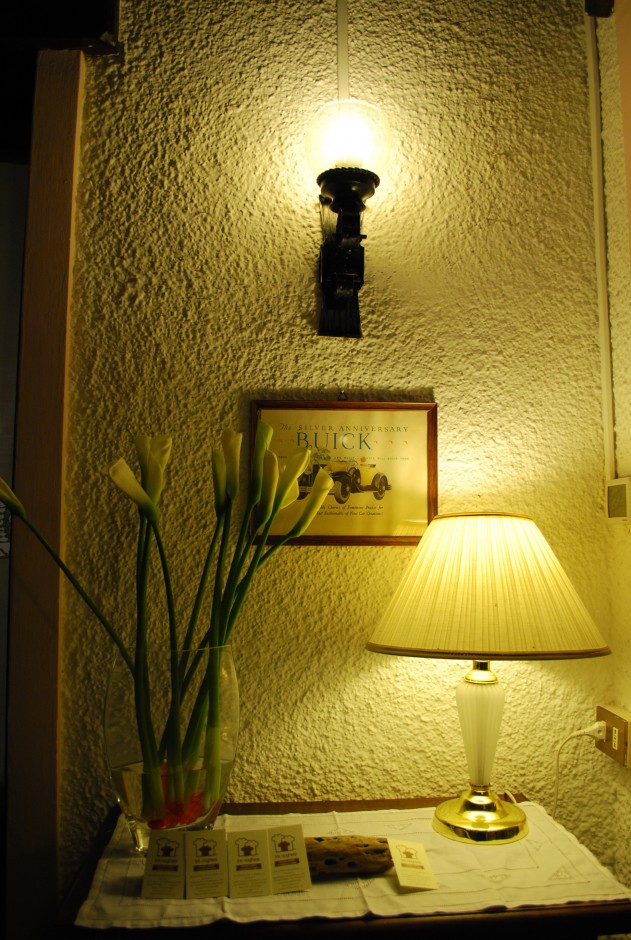
The restaurant does offer traditional home-made food; the thing that you would not expect in a place like this is a very modern, big-city style way of its arrangement on the plate. It is no coincidence as Luca has graduated from a hotel management and catering school. He has given a contemporary touch to the traditional cuisine of the region, interpreting in a new manner some of the most common meals. He has really succeeded in finding the balance between old and new. And I am not the only one to think that way. For ten years already, the restaurant is being visited by representatives of the notorious Michelin Guide, which is witnessed by multiple stickers “Selected by the Michelin Guide” at the entrance to the restaurant.
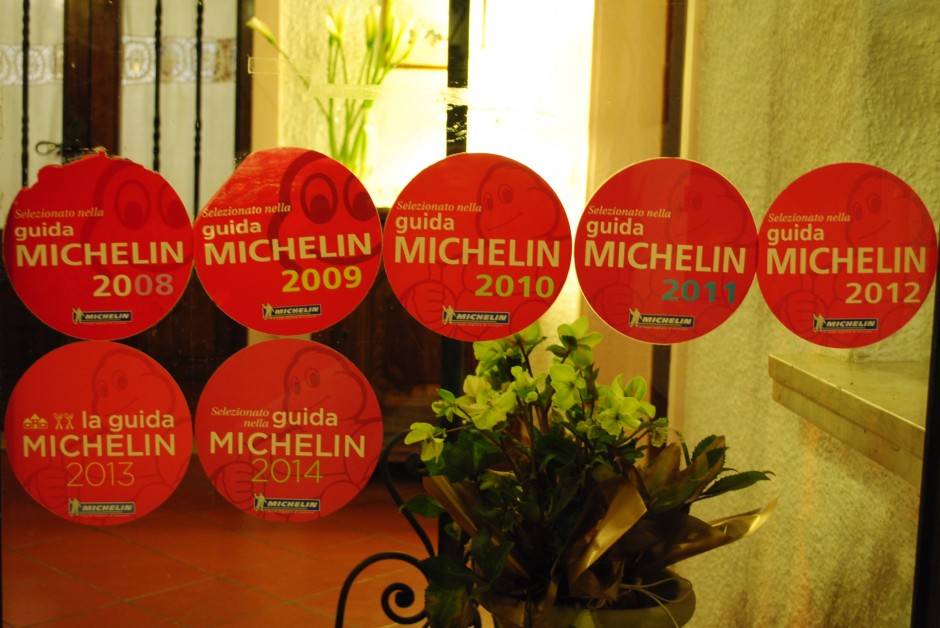
As for the visitors, I’ve heard that some families of the region have been celebrating here some important events for decades! The restaurant is quiet on the workdays, which is absolutely normal, as this is not a touristic location but a place where local people come to dine out. “Our clients are local people, who have their farming land, vineyards, it is not usual for them to leave the house in the evening and have dinner in a restaurant. They come here to celebrate birthdays, baptism of their children, and other important occasions”, Mrs. Vittoria says. Indeed, it becomes crowded on weekends, holidays, and during the periods of guided tours along the prosecco way. On these occasions, the daughter-in-law and a granddaughter comes to help Mrs. Vittoria out.
When I drop by for the second time, weeks later, Mrs. Vittoria greets me saying that she remembers me from the last time because “you were smiling all the time, and I was thinking: what a happy person must that girl be!”. Before ordering something, I talk to Luca, the chef, asking him, what does it take to run a place that has been here for over half a century? “The first thing that comes to my mind is passion. Yes, you have to be passionate about what you do.”
Though for him hotel management and catering studies have been a natural choice, given that two generations of his family had been already running the place, his children have chosen a different path and only help family on weekends. According to Luca, even though he would love his daughters to join the family business some day, it is right thing to let them choose their own path.
As more people are arriving, I do not dare to hold Luca for another moment and, before saying goodbye, ask to advise me something interesting for antipasto. Then I take his advice and choose Culatello di Sauris served with mustard in the Veneto-style. It is a ham from the back part of the pork, aged with a mix of herbs. Here it is served with a mix of mustard and orange jam.
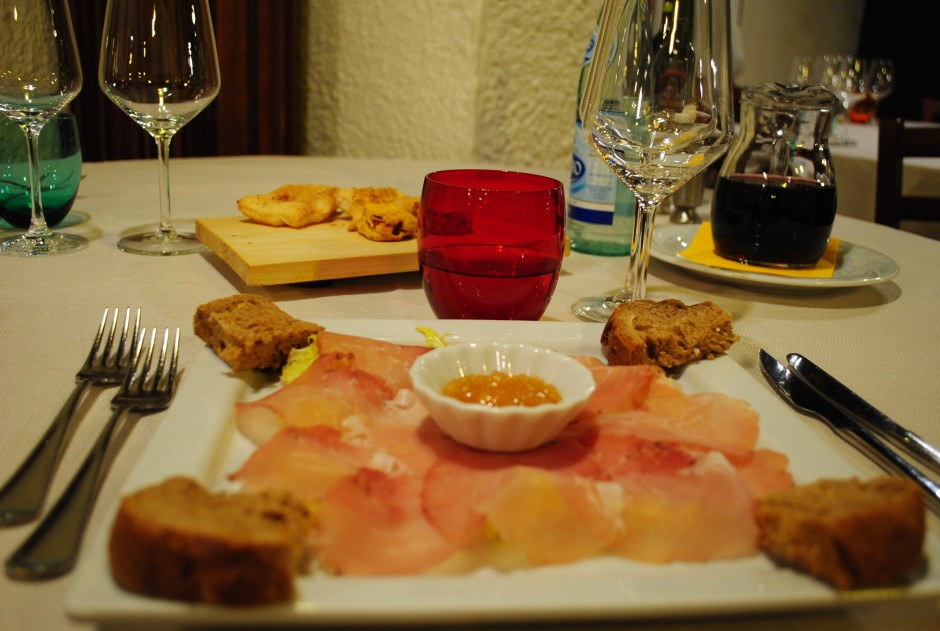
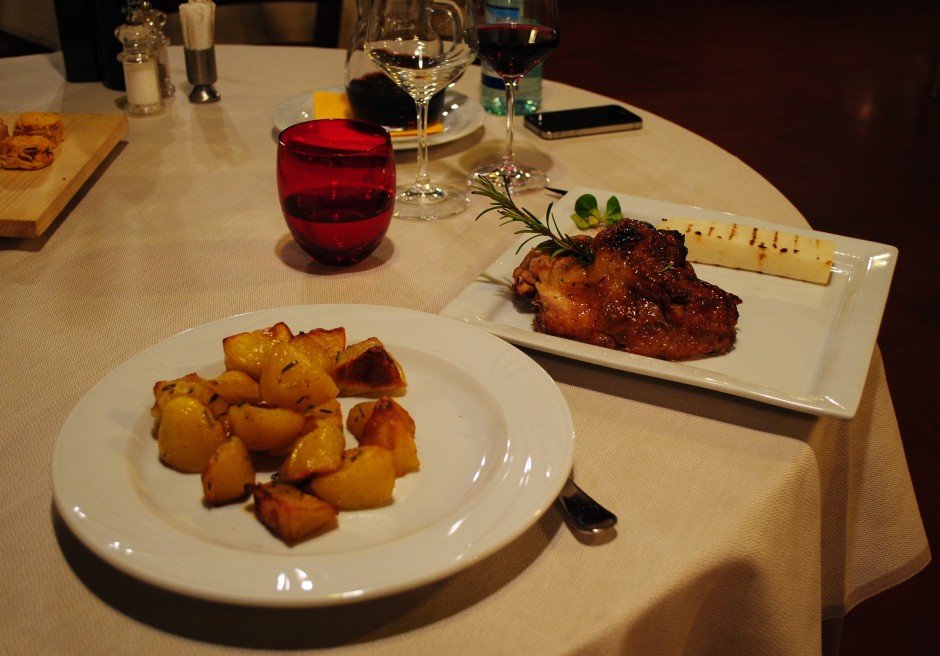
Culatello di Sauris is a smoked ham with protected geographical indication, produced by a few companies located in Sauris, in the province of Udine, following a strictly defined production tradition. It differs from other types of Italian ham by a slight taste of smoke, as it gets smoked naturally, using the wood of beech. The meat used for the production of this ham originates from eleven regions in the Northern and Central Italy, mostly Friuli Venezia Giulia. The production process takes at least 10 months, including at least 8 months of aging.
As I finish the plate, accompanied with some red house wine, I feel that I am ready for the dessert. However, I continue analysing the menu that, among other things, offers different kinds of soup in a loaf of bread, a variety of starters for everyone’s taste, prepared with a selection of typical products of the region, such as the chicory of Treviso, the Asiago cheese, etc.
I ask Mrs. Vittoria to list me the main meals of the day. They include different meat and fish, also vegetarian meals. There is a big fireplace in the middle of the restaurant, where different types of grilled meat is made. For the first time in my life, I opt for a roast guinea fowl, as this game is very popular in Northern Italy, particularly in Veneto. I feel the hints of juniper and cinnamon, as I taste it, served with polenta and roast potatoes.
Since we are in Veneto, the not-to-miss dessert, of course is one of the most well-known, if not the most well-known, Italian desserts: tiramisu. Though this dessert is now wide-spread all over Italy, his origins lie in the regions of Veneto, Friuli Venezia Giulia, and Piemonte. In Italian, translated literally, tiramisu means “lift me up”. The dessert melts in your mouth in a flash and makes you feel as if you have really reached the sky in this short but very pleasant culinary trip.
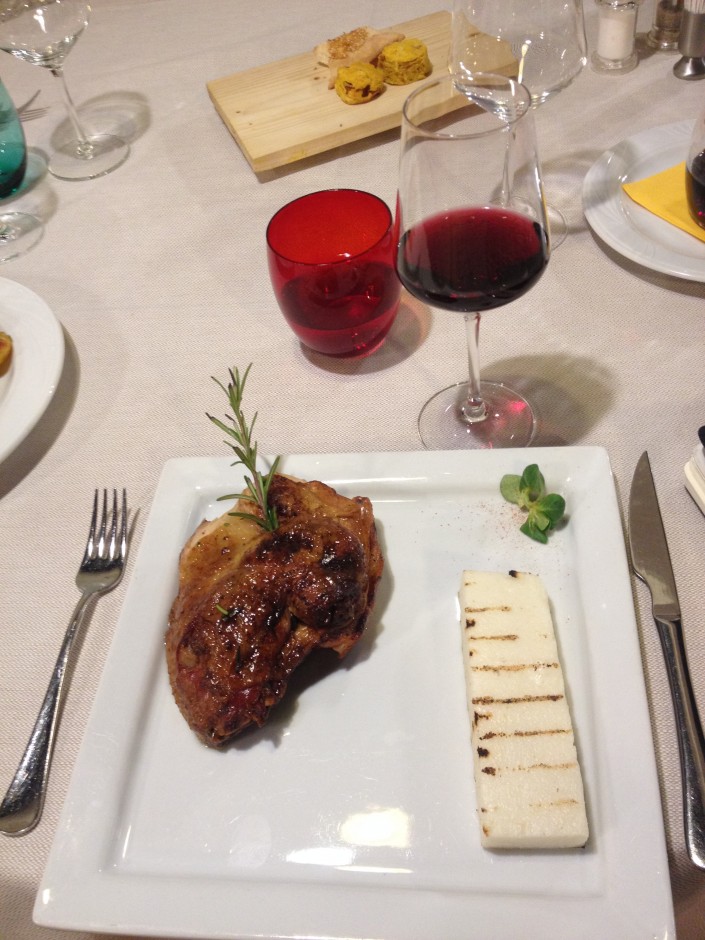



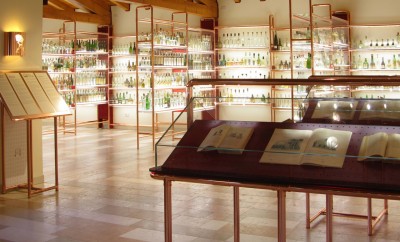







You must be logged in to post a comment Login